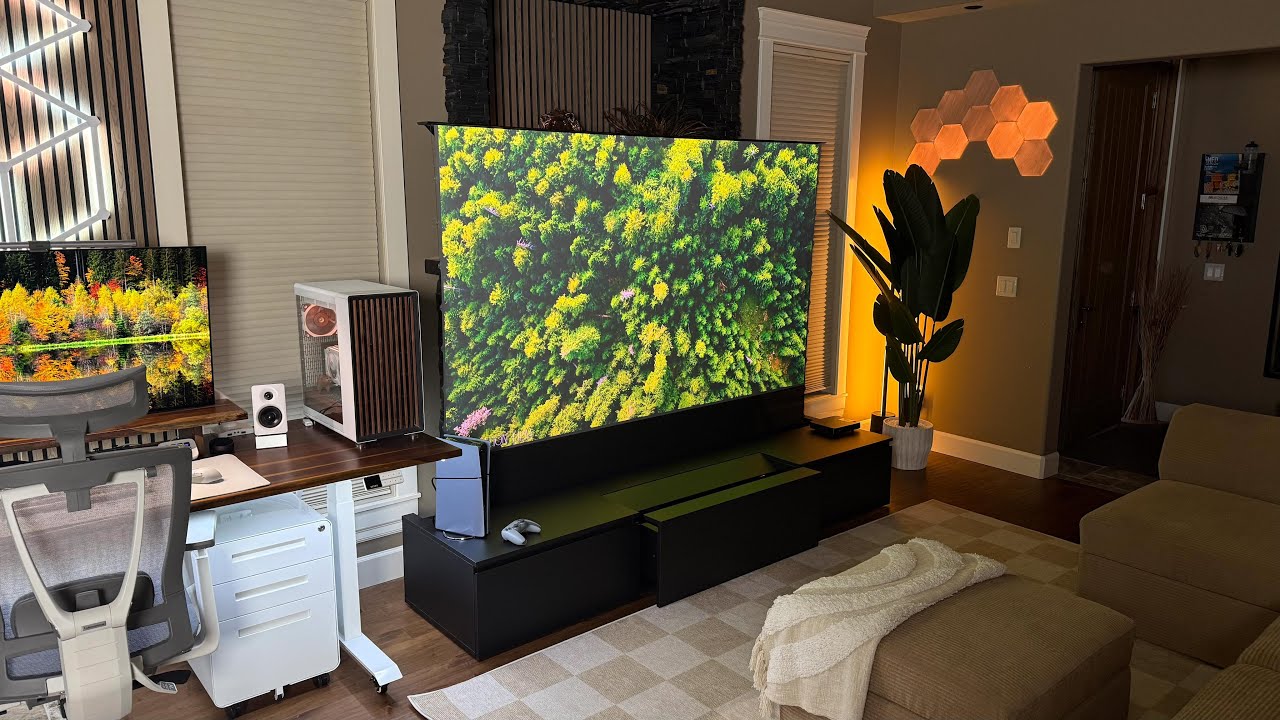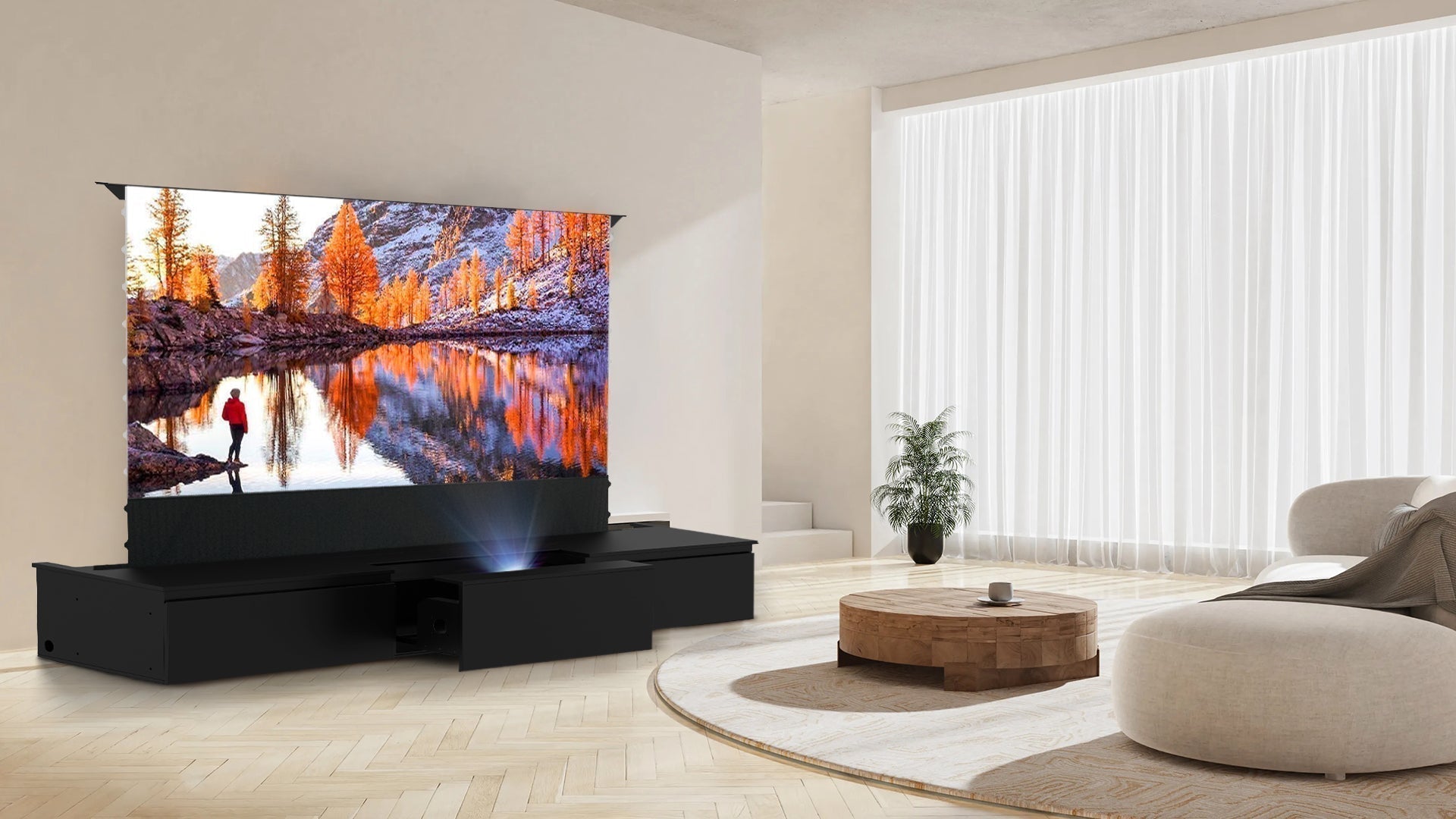Creating the perfect home theater involves more than just a big screen—it’s about combining high-quality audiovisual equipment, comfortable seating, and the right ambiance. Whether you're setting up a luxury home cinema or a cozy movie night space, here’s a breakdown of the must-have equipment for an immersive experience.

1. Audio-Visual Electronics: The Foundation
A. Choosing the Right TV
A high-resolution LED/LCD or OLED TV is a popular choice. Key factors:
- Screen Size & Resolution: 4K/8K for ultra-sharp images.
- HDR Support: Enhances contrast and color accuracy.
- Smart Features: Built-in streaming apps (Netflix, Disney+, etc.).
-
Price & Brands:
- Budget ($500–$1,500): TCL, Hisense, Vizio
- Mid-Range ($1,500–$3,500): Samsung QLED, LG OLED
- Premium ($3,500+): Sony Bravia, LG G3 OLED

B. Projector vs. TV: Which is Better?
For a cinematic experience, projectors offer larger screens (100"+). Key considerations:
- Brightness: 2,000+ ANSI lumens for lit rooms.
- Resolution: 4K projectors (e.g., Epson, BenQ, Sony).
-
Screen Type:
- Fixed Frame: Best for dedicated theaters.
- Motorized Drop-Down: Space-saving but may warp.
- Floor-Rising Screen: Ideal for living rooms (no ceiling mount).

TVs vs. Projectors: Ultimate Comparison
| Feature | Television (TV) | Home Projector |
|---|---|---|
| Screen Size | Fixed (75" max at reasonable cost) | Scalable (100"+ immersive) |
| Brightness | Superior in well-lit rooms | Poor in ambient light |
| Lifespan | 7–10 years (stable) | Bulbs replace every 2k–5k hrs |
| Maintenance | Minimal (no bulbs/calibration) | Regular filter/alignment needed |
| Burn-in Risk | OLED models vulnerable | None |
| Immersive Experience | Limited by size | Theater-like scale |
| Gaming Performance | Low input lag | Potential lag issues |
| Portability | Fixed installation | asy room-to-room move |
Verdict:
- TVs win for daily use (convenience, low upkeep).
- Projectors excel in dark rooms (immersion) but require maintenance.
C. Ultra Short Throw (UST) Projectors & Laser TV Cabinets
UST projectors (e.g., Samsung The Premiere) require a specialized Laser TV Cabinet:
Why a Laser TV Cabinet? (vs. Regular TV Stand)
| Feature | Laser TV Cabinet | Regular TV Stand |
|---|---|---|
| Automation | One-touch lid + projector sync | Manual operation |
| Storage | Dedicated hidden compartments | Open/exposed |
| Screen Compatibility | Optimized for floor-up screens | Not designed for |
| Safety | Ventilation + bump protection | Exposed equipment |
Why Choose Our Cabinets?
- Material: Premium solid wood (CE/FSC-certified).
- Design: Sleek, modern, blends with any decor.

2. Seating: Comfort is Key
A. Luxury Recliners & Massage Chairs
Features: Heating, USB charging, motorized adjustments.
- Budget ($500–$1,500): Flash Furniture
- Mid-Range ($1,500–$4,000): Seatcraft
- Premium ($4,000+): Palliser
B. Sofas & Sectionals
- Materials: Leather (durable), Fabric (soft), Velvet (cozy).
- Layout: Tiered rows for visibility, reclining sectionals for groups.
3. Lighting & Window Treatments
- Blackout Curtains: 100% light blocking (projector essential).
- Motorized Blinds: Smart-home integration (Lutron, IKEA).
4. Finishing Touches
- Acoustics: Panels/thick carpets reduce echo.
- Ambiance: LED strips + decorative pillows.
5. Environmental Design
- Window Treatments: Triple-weave blackout + acoustic drapes.
- Wall Treatments: Acoustic panels + light-controlling paint.
6. Interior Design Elements
- Lighting: 2700K sconces for eye comfort.
- Flooring: Acoustic underlayment + plush carpet.
- Decor: Themed pillows + memorabilia displays.
7. Climate & Air Quality
- HVAC: Silent operation (<25dB) + HEPA filtration.
Conclusion
A premium home theater blends cutting-edge AV tech, ergonomic seating, and smart lighting. A Laser TV Cabinet elevates UST setups with automation, storage, and screen alignment—outclassing standard TV stands.
Upgrade with our CE-certified, remote-controlled cabinets—crafted from sustainable wood!




